Barcelona – SD Eibar 3:0
Barcelona played one of their best games of the season against a team who has been causing other top Spanish clubs trouble. Eibar managed to defeat Sociedad as well as draw against Villarreal and Athletic Club. Barcelona looked like the club we all know they can be and might have given us a glimpse into the future as to how Suarez will be used in the team.
The Defenses
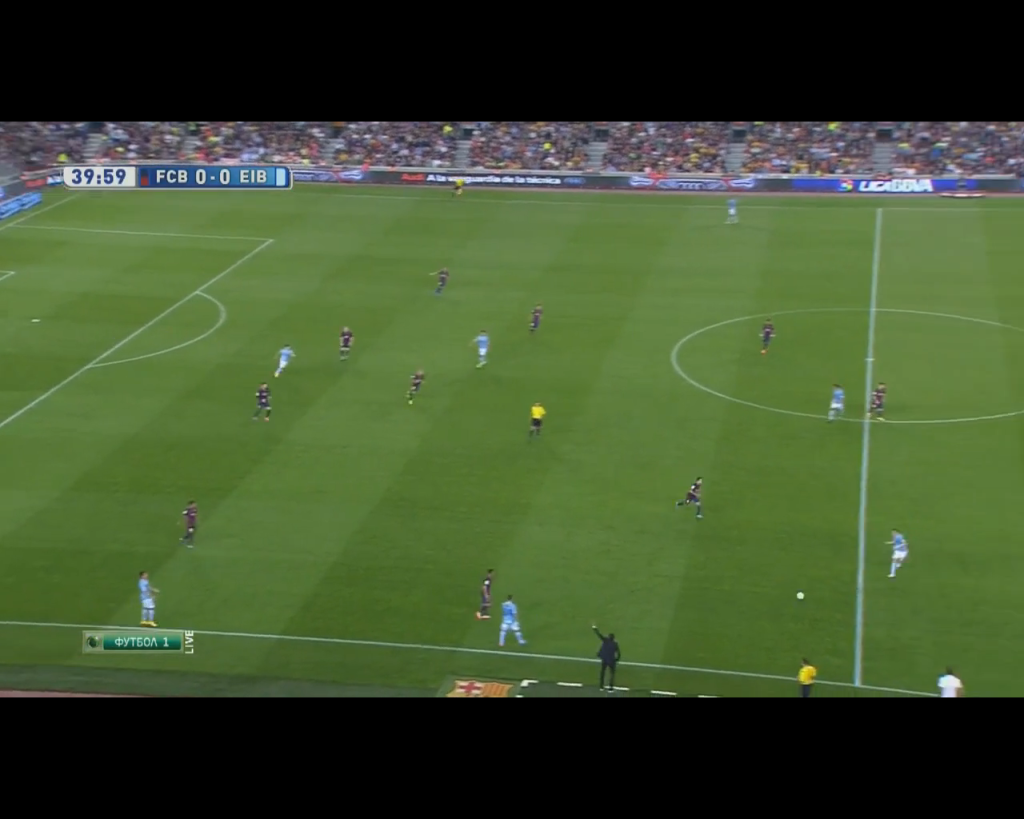
Barcelona’s narrow 4-3-3 shape in defense. (Note: Xavi is stepping up as Pedro pressured the wing back and the back pass wasnt closed down.)
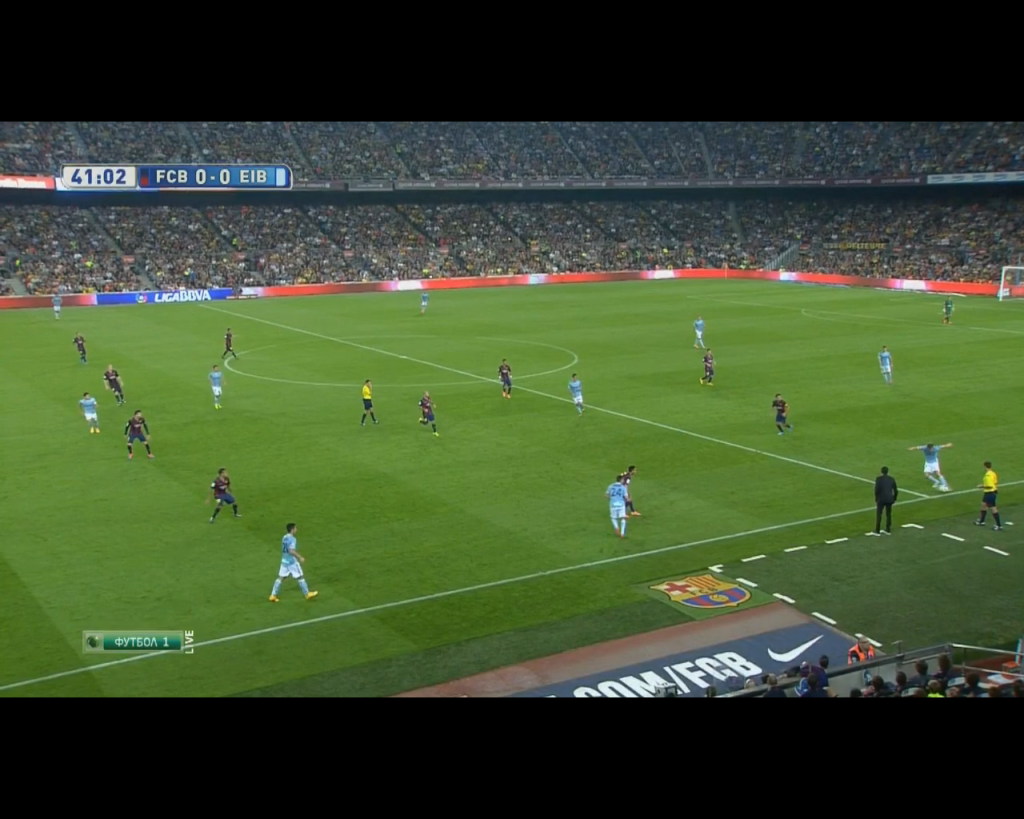
Barcelona’s high line with no pressure being exposed moments before Eibar miss a 1 vs. 1 against Bravo.
Barcelona defended in their usual very narrow 4-3-3. For the most part they were very successful in shifting aggressively towards the ball when it was played to the open flanks to isolate the area. They remained stable and didn’t allow Eibar to escape with the ball once they had attempted to play it to the flank. Enrique’s wingers mainly attempted to press with a looping run cutting off the flank and forcing the ball into the compact center. This way Barcelona could win the ball high up the field and in midfield where Eibar would be more exposed than normal. Eibar is regarded as the ‘Spanish Long Ball Team’ with the most long balls attempted in La Liga, and in this game they attempted many long balls once more. In fact they attempted 53 long balls which is just over 20% of their total passes. At times Barcelona would have a high line and be very narrow but fail to press the player on the ball. This of course is very unstable and Eibar created some very good 1 vs. 1s against Bravo with long diagonals behind Barcelona’s defense. Eibar’s forwards simply timed their runs according to the movement and vision they saw their ball player have and were able to be quite successful in penetrating Barcelona’s defense. Though Barcelona didn’t have many defensive problems overall as Eibar only managed 3 shots in open play and 2 on target. Though this could be a persistent problem if not sorted out.
Eibar played in a 5-3-2 defensively. When the ball was on the near side for the Eibar wingback he would step up to press the ball player which made Eibar defend in a situationally compact 4-4-2. The central 3 midfielders stayed in the center and protected the center and halfspaces. When pressing high up the field during short goal kicks or when Barcelona attempted to build from deep with short passing Eibar did what was the usual. They broke their shape and had man orientations towards all the short options in Barcelona’s build up play in a sort of 3-4-1-2. Even when in their 5-3-2 Eibar was very narrow and attempted to congest the center. They always shifted aggressively towards the ball, but had problems in stability when pressuring Barcelona to prevent them from escaping. This was in part due to Barcelona’s excellent positioning while in possession.
Barcelona’s Ball Possession
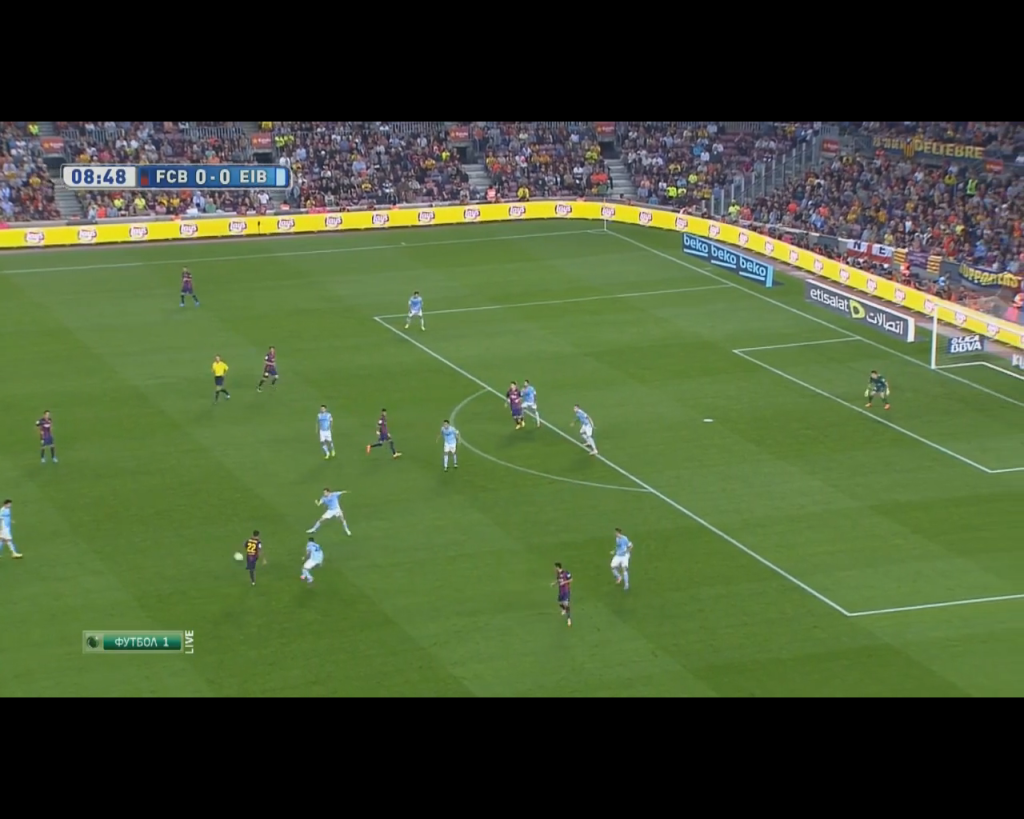
Eibar pressuring Alves aggressively while far side options are free. (Note: Roberto’s positioning too risky for a pass.)
Barcelona was able to use the ball to manipulate Eibar’s defense very well. They also had consistently great positioning while in possession so that the ball player always had a back pass or other options. Their 4-3-3 graduated to a 2-5-3 formation with many triangulations quickly created around the ball player due to the work rate of Enrique’s men with the ball. This positioning and staggering while in possession in order to offer many pass options also played a large defensive role. As soon as Barcelona lost the ball they were able to counterpress quickly and win back the ball with many angles and options covered during their press due to their staggering with the ball. There was an especially interesting situation when Pedro would move very wide and occupy the near side wingback leaving Alves free. Alves would then have to be pressured by one of the 3 central midfielders which caused Eibar’s already small amount of presence in the central areas to become even smaller. This made it even easier to manipulate the midfield of Eibar and penetrate the midfield, because none of the defenders would step into midfield to provide momentary balance to the shape. As mentioned earlier, Eibar wasn’t able to control Barcelona’s ball movement and Enrique’s men were able to switch the ball constantly, probing for an opening. Enrique’s men were often able to attract Eibar’s aggressive defense to one side of the field and switch it across to the other side where they had a favorable 2 vs. 2 situation. Alves and Messi were in a 2 vs. 2 situation on Eibar’s weakside and were able to combine and penetrate effectively. This resulted in many chances and even a surprising miss by Messi in a 1 vs. 1 against the goalkeeper after running at him diagonally. A possibility arises when the thought of Suarez starting comes to mind. Suarez could play as the central striker while Messi, Alves, Xavi (or Rakitic) are on one side and Iniesta, Neymar, and Alba are on the other. Along with Busquets connecting the sides with his inhuman decision making and speed of play. That could prove to be a successful strategy to manipulate opponents and penetrate their weaksides. For Xavi’s goal it was Xavi who played a sharp pass to Messi on the farside halfspace with space and then proceeded to make a diagonal run through Eibar’s midfield and defense. Nobody marked his run as it ran through many zones of defensive marking while penetrating the defense at an angle. Of course Messi had time and the correct field of vision to time his through pass very well and Xavi chipped the keeper for the goal. The idea of moving the opponent to one side and attacking the weak side is one of the main principles of “Juego de Posicion” under Pep Guardiola which decayed a bit under Martino.
Iniesta Effect
Iniesta joined the match in the second half after Sergi Roberto’s injury when the game was 0-0. The fact that he was introduced into the game and the scoreline quickly became 3-0 is no coincidence. Iniesta was always regarded as one of the most intelligent players in the world by Pep Guardiola. After coming on later in the game, Iniesta managed the joint highest amount of key passes for the whole game – 5. Iniesta acts almost like a vacuum to opponents around him before exposing them with his dribbling. This is an aspect that I will elaborate on in my upcoming publication on Juego de Posicion under Pep Guardiola at Bayern. When Eibar pressed he was able to beat the pressure and face his field of vision forwards with space, as seen in the image above. Iniesta’s decision making is excellent. He holds the ball long enough to concentration many opponents around him and then he plays the ball to an area that is underloaded by the opponent so Barcelona can create more chances. He was also excellent in counterpressing during this match as he cut off important passing lanes of the ball player before he even saw them. In comparison to Roberto, his positioning to receive the ball on a switch of play was much better. Roberto would sometimes be too high and therefore disconnected because of the risk of the steep angled pass possibility. Iniesta dropped enough to receive it in front of him and immediately attack with a change of rhythm. These are only a few of the effects that Iniesta created when coming on but we would need a full on player analysis to accurately capture his value. His performance still warranted his own mini-section in this analysis!
Conclusion
Barcelona played an excellent game one week before the El Clasico vs Real Madrid. There are some very positive signs and some negatives. Madrid could expose Barcelona’s situational lack of pressure on the ball player while having a high line with the long diagonals that they are so excellent at. Real Madrid will be without Di Maria and Barcelona will have Suarez. When Sandro came into the game near the end he played as the striker while Messi oriented towards the right halfspace. I suspect this will be similar when Suarez plays. Suarez may be the starting striker vs Real Madrid. With Neymar wider and Suarez central and Iniesta in the halfspace with Messi Barcelona could create amazing game. Alba and Alves would support on the flanks while Busquets and possibly Xavi control the game. Though it is not clear how Messi would perform defensively in such a role. The most important thing is that the El Clasico next week will be very interesting!
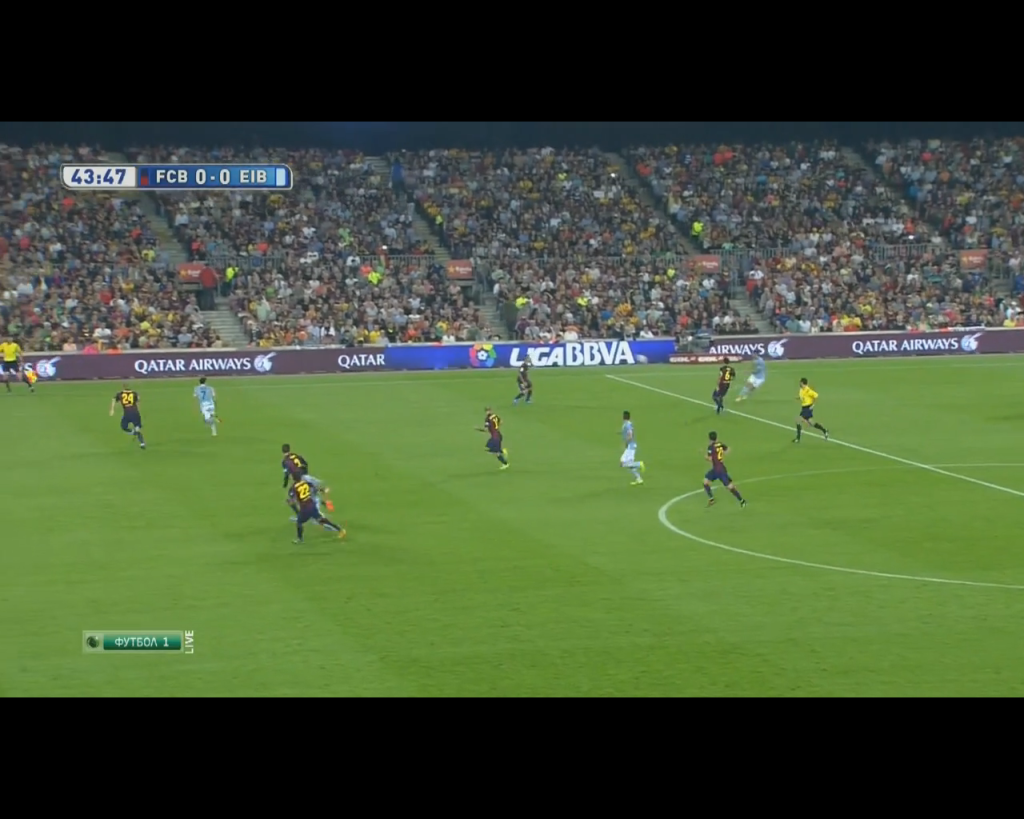
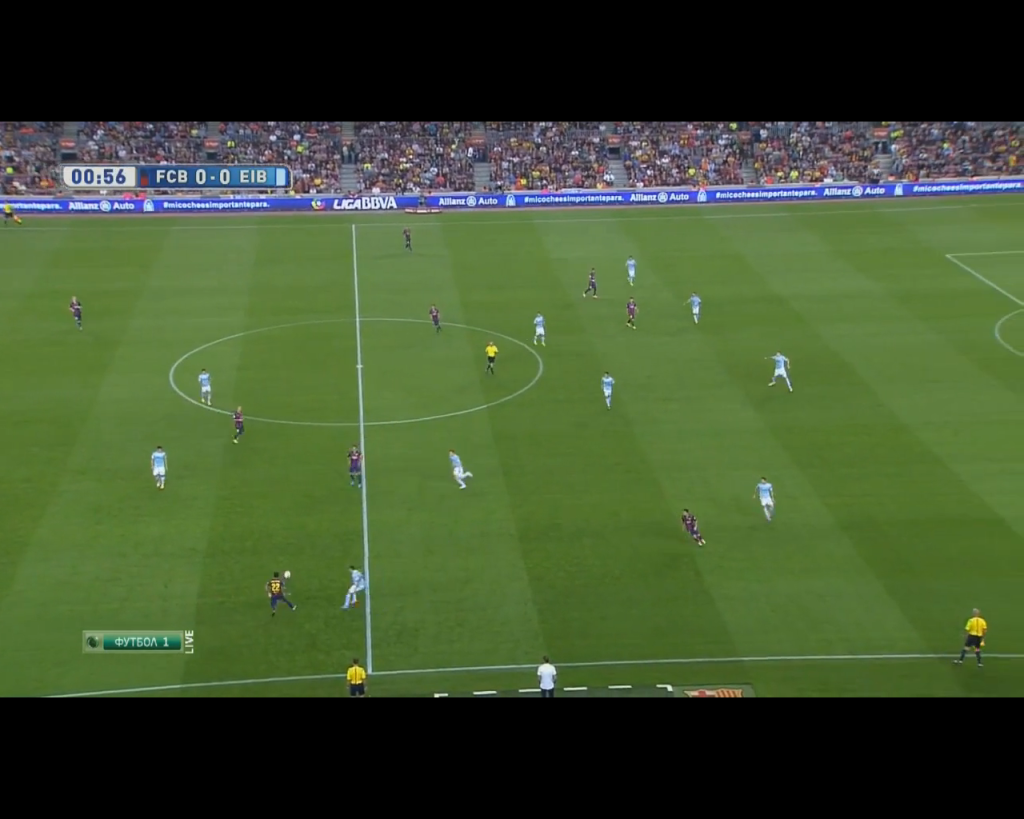
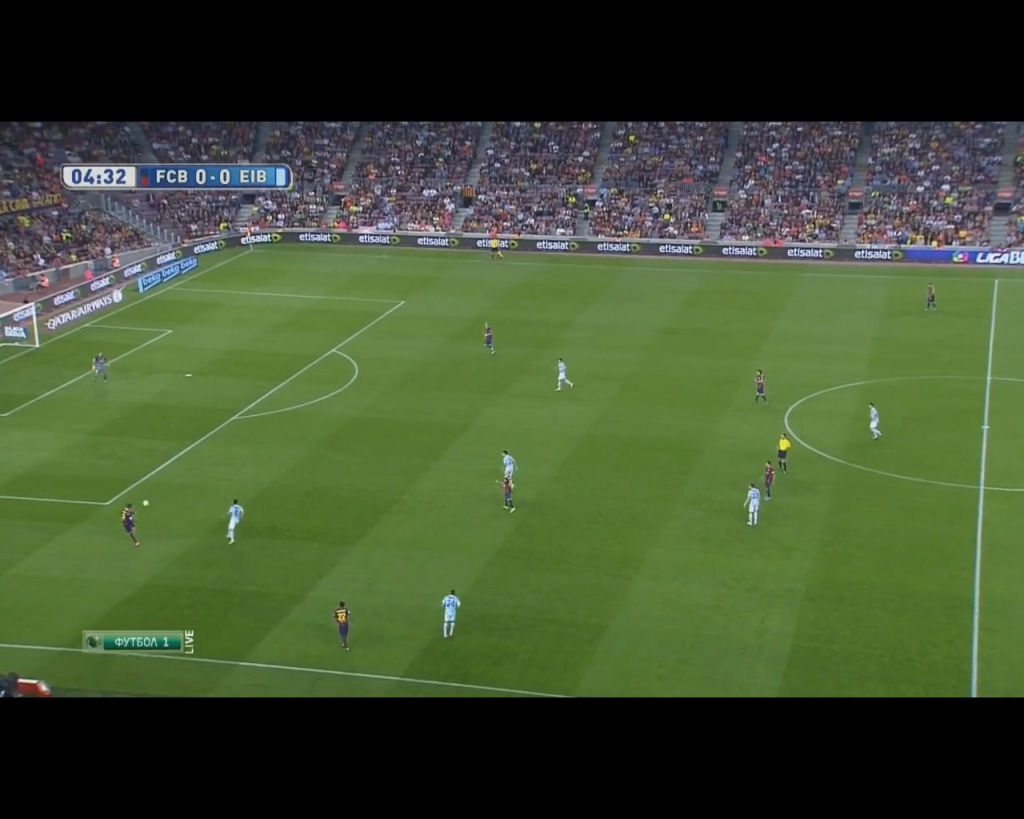

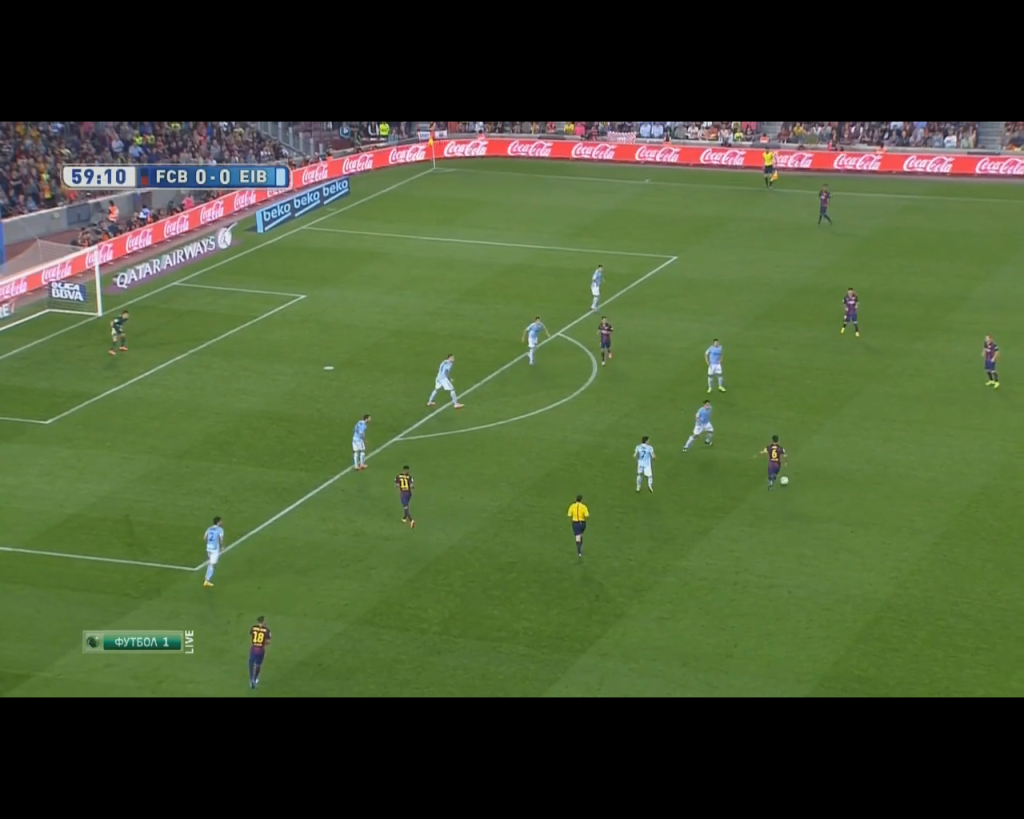
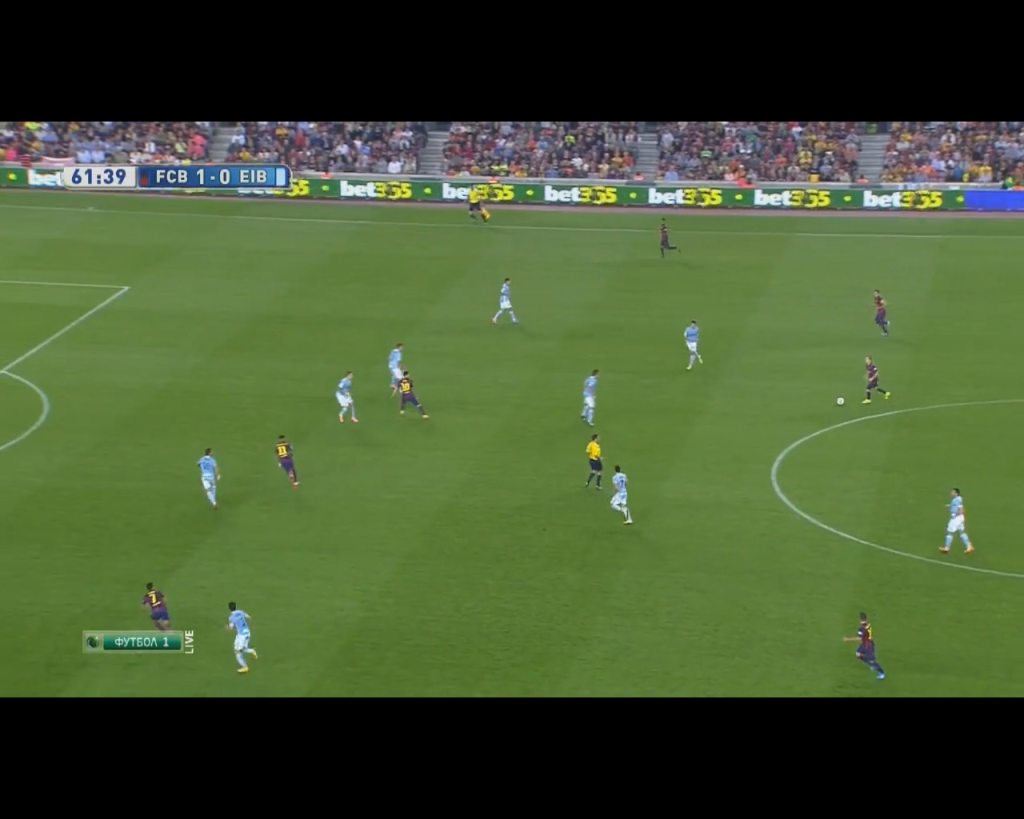
Keine Kommentare vorhanden Alle anzeigen